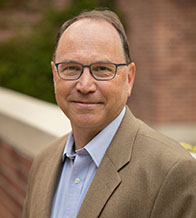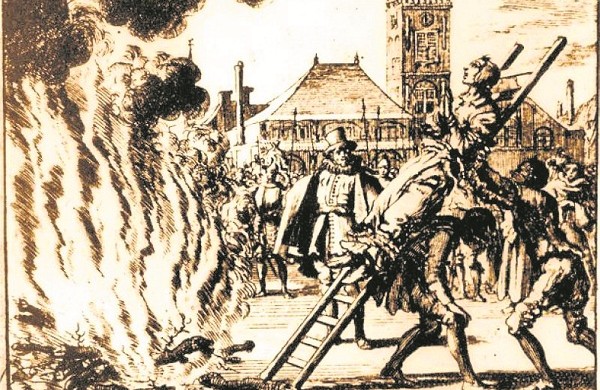It’s one of the more disturbing results of the Covid pandemic and it’s real. Too many western democracies have been in bad enough shape before the pandemic and the need to roll back the power of global corporations has been pressing enough but Covid has catalyzed a new threat: a new level of anti-government and anti-establishment conspiracy thinking that can only weaken democratic institutions as well as undermine confidence in sound scientific processes that are aimed at general health and well-being.
A survey report commissioned by the New South Wales government has been released by Macquarie University, Online Far Right Extremist and Conspiratorial Narratives During the COVID-19 Pandemic, to help us understand and counter the rise of this growing extremist outlook. The major threat that it singles out is the ability of far-right extremists to mainstream their narrative with the broader community and so increase their audience scope and potential support for anti-social actions.
In this post I single out just one item in one of the sources the report cites:
- Leach, Anna, and Miles Probyn. “Why People Believe Covid Conspiracy Theories: Could Folklore Hold the Answer?” The Guardian, October 26, 2021. https://www.theguardian.com/world/ng-interactive/2021/oct/26/why-people-believe-covid-conspiracy-theories-could-folklore-hold-the-answer. [Check the waybackmachine archive.org link if the above does not work]

Researchers have mapped the web of connections underpinning coronavirus conspiracy theories, opening a new way of understanding and challenging them. . . . .
Using Danish witchcraft folklore as a model, the researchers from UCLA and Berkeley analysed thousands of social media posts with an artificial intelligence tool and extracted the key people, things and relationships. . . .
Gates is a persistent figure in the anti-vaccine stories. “He’s a great villain,” says the folklorist Prof Timothy Tangherlini who collaborated with Roychowdhury on the research. It’s Gates’ world-spanning influence in tech and then health that lodges him at the heart of a lot of conspiracies. . . .
Folklore isn’t just a model for the AI. Tangherlini, whose specialism is Danish folklore, is interested in how conspiratorial witchcraft folklore took hold in the 16th and 17th centuries and what lessons it has for today.
Whereas in the past, witches were accused of using herbs to create potions that caused miscarriages, today we see stories that Gates is using coronavirus vaccinations to sterilise people. A version of this story that omits Gates but claims the vaccines have caused men’s testicles to swell, making them infertile, was repeated by the American rapper Nicki Minaj.
(bolded highlighting is mine in all quotations)
I’m sure that not all anti-vaxxers are interested in Bill Gates, especially in Australia. But the conspiratorial responses concerning elites taking over our governments and threatening our freedoms are the same. A “covid-sceptic” might hear a story about Bill Gates but adjust it to what fits his or her version of the conspiracy. To quote from Tangherlini in the article once more:
In folklore, we have this law of self-correction. So if something doesn’t quite fit, you go back to the way you heard it from 15 other people. I might be saying Jeff Bezos. But if three other people are saying Bill Gates, it’s going to be Bill Gates.

The Guardian article’s conclusion is worth quoting, too:
Why do people believe things that seem so wrong?
Conspiracy theories often crop up after catastrophic or unusual events and they thrive in environments where there is a lack of trusted information, says Tangherlini.
In 16th and 17th century Denmark, catastrophic events from floods to poisonous algae mixed with the massive change brought by industrialisation. For those isolated on small farms, access to trusted, consistent information was scarce and stories about witches start to take hold.
Today it’s clear that coronavirus has been a catastrophic event that has impacted everyone’s lives. On the face of it, a lack of information is not a problem in wealthy countries. However, the overload of information online can produce the same effect that Danish farmers faced several centuries ago – a lack of trusted information.
This is where conspiratorial storytelling comes in and these stories start to get created. Then, as now, stories are a powerful way of talking about what we fear.
In my other posts about propaganda I have attempted to underscore the point that a glut of information can have the same effect as too little information. Most of us don’t have the time to take in all the information available, let alone analyse or check it all. It can be too easy to not bother even trying to sift wheat from chaff and fall back on simplistic narratives that offer easy to understand answers.
To quote one section from the report with which I opened this post, pp 38-39:
Conspiracy theories provide simplistic answers to complex problems such as the current global health crisis, and present experts and traditional systems of authority and government as malevolent and untrustworthy. Belief in a conspiracy theory is not a reliable indicator of an acceptance of far right extremism, but conspiratorial thinking is prevalent within far right extremist (and many other extremist) movements, and may provide a vulnerability for pathways into these.
While conspiratorial thinking is detrimental and corrosive to liberal democracy, in sum there are three qualities of conspiratorial thinking that make it particularly concerning for social cohesion:
First, conspiracy theories concerning COVID-19 present a global narrative that can be linked to a host of diverse local issues and grievances. This allows far right extremists to exploit local tensions for their broader political agenda by connecting their narratives with world affairs.
Second, conspiracy theories form an alternative reality. This alternative reality serves as a framework under which multiple fringe movements, ideologies, and concerns can be mobilised. This allows far right extremists to mobilise among new social groups not traditionally receptive to their narratives or aims.
Third, by presenting the crisis as caused or exacerbated by the actions of a sinister and malevolent out-group, conspiracy theories justify an implicit solution in neutering or removing the out-group. This can present pathways towards anti-establishment civic dissent and violence.
A positive response to this growing threat to our societies that the report advises is to respect and engage productively with all those with concerns about covid, medical and vaccine advice, and government policies and to be careful not to label them with the far-right extremists who espouse the same views. To fail to do so risks driving them towards those extremists.
Leach, Anna, and Miles Probyn. “Why People Believe Covid Conspiracy Theories: Could Folklore Hold the Answer?” The Guardian, October 26, 2021
Waldek, Lise, Droogan, Julian, and Ballsun-Stanton, Brian. “Online Far Right Extremist and Conspiratorial Narratives During the Covid-19 Pandemic.” Government report for Department of Communities and Justice, NSW. Sydney, NSW: Macquarie University, March 22, 2022. https://doi.org/10.5281/ZENODO.5732611.
